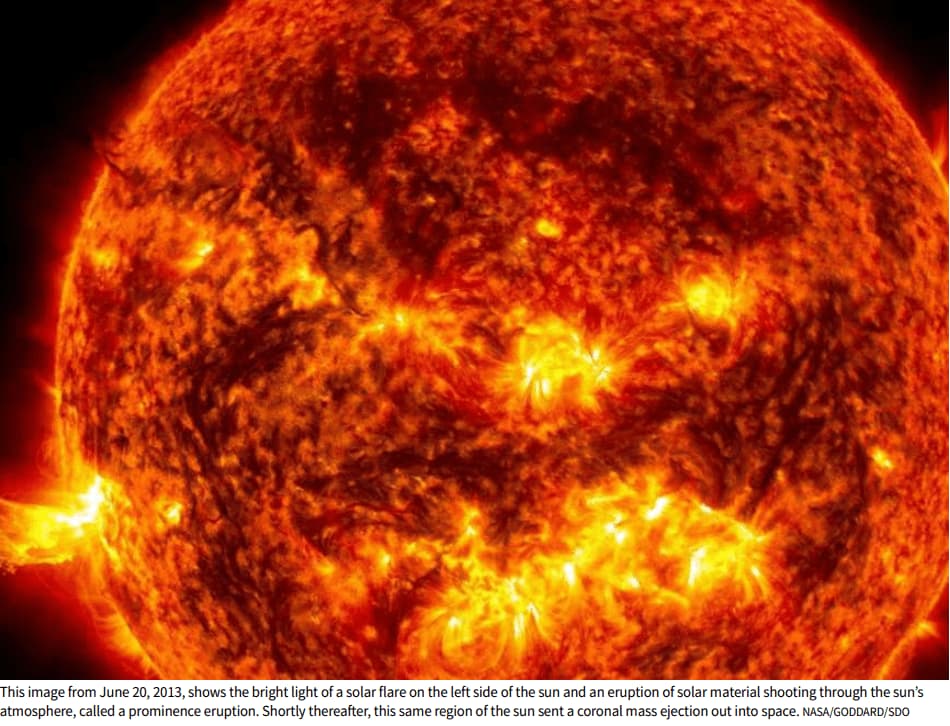Context: Scientists have found a mismatch between the predicted opacity of iron inside the Sun and what experiments are now showing. This mismatch could affect solar models, and in our understanding of all stars, galaxies and even the universe’s evolution.

What is Opacity?
Opacity measures how much light or radiation a material absorbs.
Higher opacity → More light absorption, less light transmission.
In stars like the Sun, opacity governs how energy moves from the core to the surface.
Why Does Iron Opacity Matter in the Sun?
The Sun serves as a benchmark for understanding other stars and stellar evolution.
Energy transport in the Sun relies on how radiation interacts with elements like iron.
Iron contributes significantly to opacity, especially in the radiative zone.
Underestimating iron opacity can lead to:
Inaccurate temperature and density profiles,
Misestimation of element abundances,
Errors in stellar model predictions.
Observations vs. Models
Pre-2010s: Observations suggested 30–50% less carbon, oxygen, and nitrogen in the Sun than models predicted.
Despite this, models still matched:
Solar luminosity (brightness),
Neutrino output (from nuclear reactions in the core).
A 2015 experiment recreated solar interior conditions and found:
Iron opacity was 30–400% higher than theoretical models predicted.
This raised questions about the accuracy of opacity data used in stellar modeling.
The Path Forward
Absolute, high-precision opacity measurements are still in development.
These measurements are crucial to resolve the “solar abundance problem” and improve stellar evolution models.
Implications for Astrophysics
1. Impact on Stellar Physics
Inaccurate opacity values distort models of:
Internal stellar temperatures
Elemental composition and diffusion
Rates of nuclear fusion and energy transport
These lead to misrepresentations of a star’s life cycle, structure, and observable characteristics.
2. Broader Consequences
Planetary Habitability:
Stars influence planetary environments; flawed models may lead to inaccurate assessments of habitable zones.
Galactic Evolution:
Stars are fundamental building blocks of galaxies.
Misjudging stellar outputs skews models of star formation rates, chemical enrichment, and galactic dynamics.
Cosmic Structure and Interstellar Chemistry:
Stellar light influences interstellar medium chemistry and molecular cloud evolution.
Errors in stellar radiation models affect simulations of cosmic structure formation.
